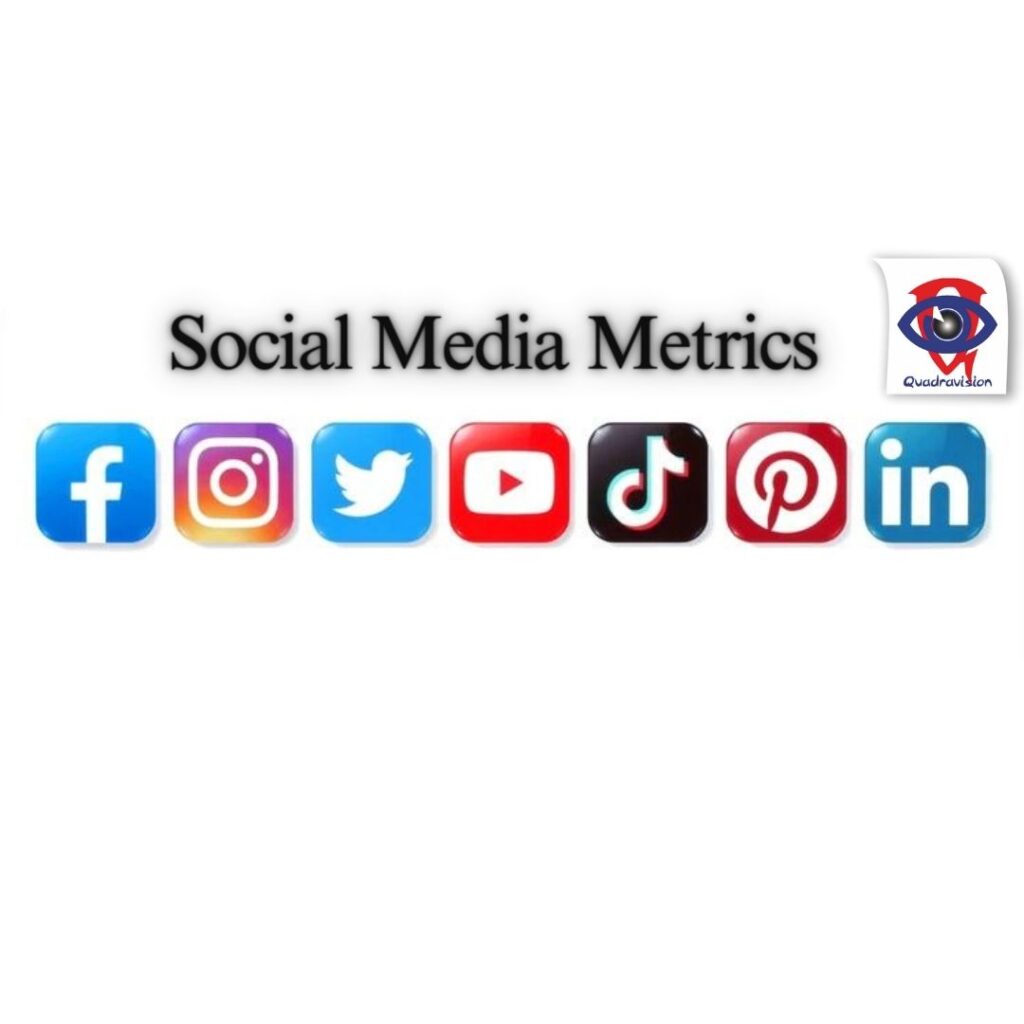Social media metrics are used to analyze data to determine how social media activity affects a business’s bottom line. To track the activity on social media sites and learn how a brand, product, or business-related topic is need to track social media metrics. Marketers frequently utilize social media monitoring software.

Some main points of social media metrics :
Reach

The quantity of people who view your material is known as reach. Monitoring both your overall reach and the reach of each particular post, story, or video is a good idea. Looking at the ratio of followers to non-followers in your reach is a useful subset of this statistic. Your material is being shared, performing well in the algorithms, or both. If a large number of people who are not followers are seeing it.
Impression
One of the social media metrics is Impression, how many users are viewing our content. The number of impressions reflects how many times your article was viewed. Due to the possibility that a single individual will view your material more than once. It may be higher than reach. A post is being looked at more than once when there is a very high number of impressions relative to reach. Look into it further to see if you can figure out why it’s so sticky.
Audience growth rate
The audience growth rate tracks the number of new social media followers your business acquires over a specific period of time. A mere count of your new followers is not sufficient. Instead, it displays how much of your entire audience your new followers represent. Therefore, gaining 10 or 100 new followers in a month can provide you with a strong growth rate when you’re just getting started.
But to keep up the pace after you have a larger audience already, you need additional new supporters. Track your net new followers (on each platform) during a reporting period to determine your audience growth rate. To determine your audience growth rate percentage, divide that figure by the entire audience you have (across all platforms). So, another important social media metrics is audience growth rate.
Engagement Rate
Engagement rate is other important aspect of social media metrics. The percentage of your audience that engages with your content (via reactions, comments, and shares) is known as the engagement rate. It depends on you to define “audience.” Consider calculating engagement in relation to your following.

But keep in mind that not every one of your followers will view every post. Additionally, those who don’t (yet) follow you may engage with you.
Therefore, there are various methods for calculating engagement. In fact, there are so many that we wrote an entire blog post about the various ways to gauge engagement rates.
Engagement rate benchmarks:
- Facebook: 0.06%
- Instagram: 0.68%
- Amplification rate: The Amplification Rate is the proportion of total followers to share each post.
It is defined as “the rate at which your followers consume your information and disseminate it through their networks.” In general, your followers will extend your reach for you more as your amplification rate rises. Divide the total number of shares for a post by the total number of followers you have. To calculate your amplification rate as a percentage, multiply by 100.
Follow us on Instagram for more valued content!!!
Virality Rate
The virality rate is similar to the amplification rate in that it measures how much your content is shared. However, the virality rate calculates shares as a percentage of impressions rather than as a percentage of followers. Remember that every time someone shares your content, it achieves a fresh set of impressions via their audience.
So virality rate measures how your content is spreading exponentially. To calculate the virality rate, divide a post’s number of shares by its impressions. Multiply by 100 to get your virality rate as a percentage. Therefore virality rate is also an important part of social media metrics.
Conversion Rate

Another important social media metrics you need to track is Conversion Rate. The frequency with which your social media content initiates a conversion event, such as a download, sale, or subscription, is measured by its conversion rate. This is one of the most crucial social media marketing metrics since it demonstrates how valuable your paid and organic social media campaigns are for filling your funnel.
A text snippet called a UTM (Urchin Tracking Module) code is appended to the end of a URL in order to monitor the metrics and effectiveness of a particular digital marketing campaign. Tracking your social conversions requires UTM parameters.
After adding your UTMs, divide the total number of conversions by the total number of clicks to get the conversion rate.
Conclusion
In conclusion, monitoring social media metrics is essential for navigating the dynamic online platform environment. Businesses and individuals can optimize their strategies for maximum impact and gain a comprehensive understanding of audience behavior by tracking engagement, reach, conversions, and other crucial metrics. Our ability to adapt and make decisions based on data will undoubtedly be crucial for success in the rapidly evolving social media landscape. By staying aware of the nuances of various metrics, one can use social media in this connected digital age to create meaningful connections, increase brand visibility, and ultimately achieve goals.

